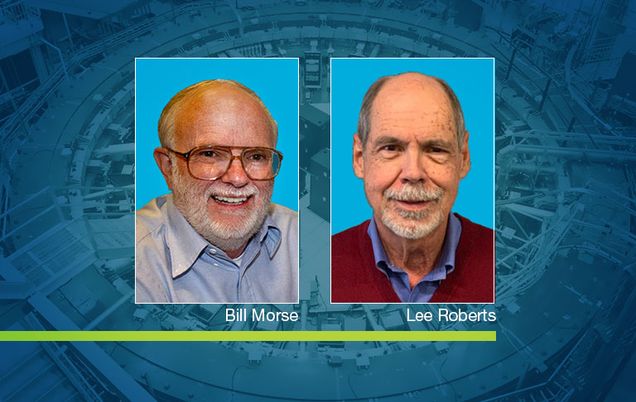Boston University College of Arts & Sciences Professor of Physics Bradley Lee Roberts has been awarded the American Physical Society’s 2023 W.K.H. Panofsky Prize in Experimental Particle Physics for leadership of the muon g-2 experiment in collaboration with Dr. William M. Morse, of the U.S. Department of Energy’s Brookhaven National Laboratory.
The prize consists of $10,000 to be split equally, along with a certificate citing their outstanding achievements in experimental particle physics, which will be awarded at the APS April 2023 meeting in Minneapolis, Minnesota.
“I am honored to share this award with Bill Morse,” Professor Lee said. “Over many decades, BU has played a major role in g-2, with strong support from the top BU administration. My colleagues Jim Miller and Rob Carey were central to the success of the Brookhaven experiment, and I am grateful for their many contributions and friendship.”
The official citation for the pair reads as follows:
“For leadership and technical ingenuity in achieving a measurement of the muon anomalous magnetic moment with a precision suitable to probe Standard Model mediated loop diagrams and possible manifestations of new physics, which inspired a vibrant synergy between experimental and theoretical particle physics to determine a comparably precise Standard Model prediction and interpret the implications of a possible discrepancy.”

Roberts and Morse’s work at the Brookhaven National Laboratory dates back to 1990, when they began working on the “E821 g-2” experiment with Vernon Hughes (Yale University), which would later become the initial research for the muon g-2 experiment. The E821 g-2 experiment, which was completed in 2004, revealed discrepancies in predictions of muons’ spin precession, which take into account the muons’ interactions with all known particles and forces in the Standard Model of particle physics.
Though the team’s findings did not meet the level of significance for claiming a major discovery in this initial experiment, they did pave the way for a yet-to-be discovered particle interaction, and enough interest to launch the muon g-2 experiment.
The Muon g-2 experiment ignited a worldwide effort to improve the precision of both the theoretical predictions and the experimental measurements to see if the difference would widen. Roberts and Morse have had a hand in various phases of the experiment over the last 30 years.
Roberts, who served as co-spokesperson of the Brookhaven Muon g-2 experiment, led the experiment program, and spearheaded the formation of the collaboration, said, “I am honored to share this prize with Bill Morse, who played a crucial role in the design and construction of the storage ring at Brookhaven, and in understanding the data while they were being analyzed.”
Brookhaven National Laboratory reports that Fermilab’s Muon g-2 experiment garnered its first results in 2021, which confirmed the result Roberts and Morse found in the original Brookhaven experiment in 2004. Fermilab now has almost twenty times the data set of the original Brookhaven experiment, with only a small fraction of that already analyzed. New results from their more precise g-2 measurement are expected to be released in the spring of 2023.
“I’m overjoyed by the announcement that my colleague, Lee Roberts was selected to share the 2023 Panofsky Prize, the most important award bestowed by the American Physical Society in Experimental Particle Physics,” says Andrei Ruckenstein, chair of the BU Department of Physics. “The citation recognizes Lee’s key role in measurements of the anomalous magnetic dipole moment of a muon, an experiment that provides a sensitive test of the Standard Model of particle physics. The current results point to the possibility of new physics that goes beyond the Standard Model and, of course, this would be very exciting. Lee is joining Larry Sulak and Ed Kearns as the third BU faculty to be awarded the prize – Larry in 2018 and Ed in 2021. It’s wonderful to work with people of this caliber.”
Read more about the experiment from Brookhaven National Laboratory.